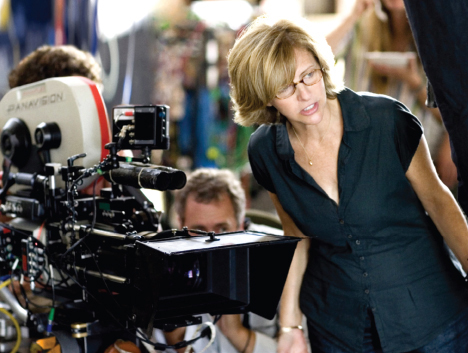Inside the Hollywood System: Setting the Standard for Narrative Style
Printed Page 205
By the time talkies had transformed the film industry, Hollywood had established firm control over narrative style, the recognizable way in which directors told stories through the movies they made. Hollywood had set the example for most moviemaking style worldwide, and continues to dominate American filmmaking style today. The model it developed serves up three ingredients that give Hollywood movies their distinctive flavor: the narrative (or story), the genre (type of story), and the author (or director). The right blend of these ingredients—combined with timing, marketing, and luck—has enabled Hollywood to create a long string of movie hits, from 1930s and 1940s classics like Gone with the Wind and Casablanca to recent successes like The Avengers and Moonrise Kingdom.
Hollywood Narratives
As we’ve seen, storytelling had long existed in movies, even in the silent era. But it was Hollywood’s Golden Age that saw the emergence of a distinctive narrative style that movie viewers soon associated with American filmmaking. Narrative always includes a story (what happens to whom) and discourse (how the story is told). Most movies feature a number of stories that play out within the film’s larger, overarching narrative. These narratives also present recognizable character types (protagonist, antagonist, romantic interest, sidekick) and have a clear beginning, middle, and end. The plot is usually propelled by the main character’s decisions and actions to resolve a conflict by the end of the movie. Nowadays, filmmakers also use computer-generated imagery (CGI) or digital remastering to augment narratives with special effects—providing a powerful experience that satisfies most audiences’ appetite for both the familiar and the distinctive.

Hollywood Genres
In addition to establishing a unique narrative style in its Golden Age, Hollywood gave birth to movie genres, categories in which conventions regarding characters, scenes, and themes recur in combination. Familiar genres include comedy, drama, romance, action/adventure, mystery/suspense, gangster, westerns, horror, fantasy/science fiction, musicals, and film noir (French for “black film”)—a genre developed in the United States after World War II that explores unstable characters and the sinister side of human nature.
Grouping films by category enabled the movie industry to achieve both product standardization (a set of formulas for producing genres) and product differentiation (a diverse set of movie-watching experiences for viewers to choose from).
Hollywood “Authors”

As another defining characteristic of Hollywood’s Golden Age, movie directors gained significant status. In commercial filmmaking, the director serves as the main “author” of a film. Sometimes called by the French term, auteurs, successful directors develop a particular cinematic style or an interest in specific topics that differentiates their narratives from those of other directors. During Hollywood’s Golden Age, great directors included Alfred Hitchcock, Howard Hughes, Sam Goldwyn, and Busby Berkeley—each famous for his defining moviemaking style. Today, directors are just as distinctive: When you hear that a new movie is a “Spielberg film,” a “Tarantino project,” or “the latest from the Coen brothers,” you have a good idea of what to expect.
As the 1960s and 1970s unfolded, the films of Francis Ford Coppola (The Godfather), Brian De Palma (Carrie), William Friedkin (The Exorcist), George Lucas (Star Wars), Martin Scorsese (Taxi Driver), and Steven Spielberg (Jaws) signaled the start of a period that Scorsese has called “the deification of the director.” Through this development, a handful of talented directors gained the kind of economic clout and celebrity standing that had previously belonged to top movie stars. Though directors lost power in the 1980s and 1990s, the tradition carries on with well-known directors like Tim Burton, Quentin Tarantino, and Christopher Nolan.
Even today, most well-known film directors are white men. Only four women have ever received an Academy Award nomination for directing a feature film: Lina Wertmüller in 1976 for Seven Beauties, Jane Campion in 1994 for The Piano, Sofia Coppola in 2004 for Lost in Translation, and Kathryn Bigelow who won Best Director for The Hurt Locker in 2010. Directors from other groups have also struggled for recognition in Hollywood—and a few have become successful. Well-regarded African American directors include Kasi Lemmons (Talk to Me, 2007), John Singleton (Abduction, 2011), and Spike Lee (Red Hook Summer, 2012). (For more see “Media Literacy Case Study: Breaking through Hollywood’s Race Barrier”.) Asian Americans M. Night Shyamalan (The Last Airbender, 2010), Ang Lee (Life of Pi, 2012), and Wayne Wang (Snow Flower and the Secret Fan, 2011) have also built accomplished directing careers.